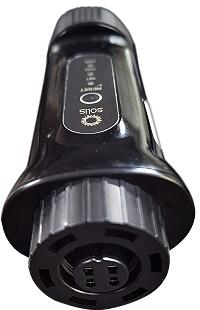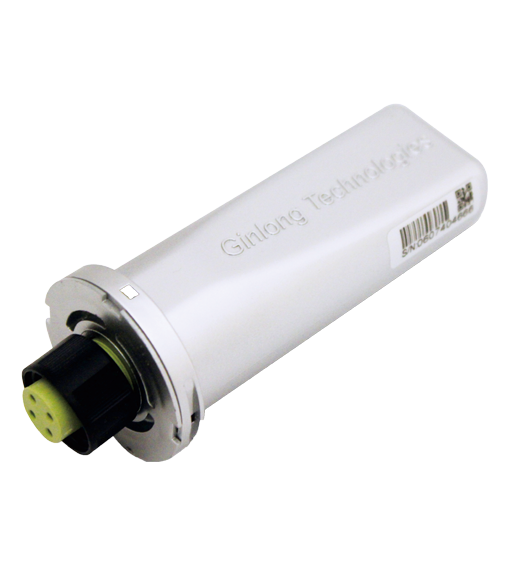| Connection Type | DLS-W | DLS-L | S3-WiFi-ST | S2-WL-ST |
|---|---|---|---|---|
| WiFi | Yes | No | Yes | Yes |
| LAN | No | Yes | No | Yes |
| SolisCloud | Yes | Yes | Yes | Yes |
| SolisCloud Remote Control | Yes* | Yes* | Yes | Yes |
| Home Assistant via SolarMan v5 | Yes | No | No | No |
| Home Assistant via Core Modbus TCP | No | Yes (3389) | No | Yes (502) |
| Home Assistant via SolaX Modbus Integration | No | Yes (3389) | No | Yes (502) |
| Home Assistant / SolisCloud Simultaneous | Yes | Yes | No | No |
| Home Assistant via Solis API | Yes | Yes | Yes | Yes |
(*) First reported working in April 2023; however, there are mixed messages from users complaining about the SolisCloud Remote Control with legacy dataloggers.
These are currently being sold and supported by Solis:This seems to be the most common datalogger supplied with new systems. WiFi only. With it, you can:
- Connect to SolisCloud (data at 5-minute intervals)
- Control the inverter via SolisClud remote control (https://solis-service.solisinverters.com/en/support/solutions/articles/44002373796-inverter-remote-control-application)
- Connect to Home Assistant using the read-only API integration at a 5-minute refresh: (https://github.com/hultenvp/solis-sensor)
Without additional hardware or its firmware modification, you cannot directly connect to Home Assistant via Modbus TCP.
To modify its firmware (do at your own risk):
- ginlong-solis: https://github.com/hn/ginlong-solis
You can get Home Assistant and Soliscloud without modifying its firmware if you follow this approach: https://github.com/alienatedsec/solis-ha-modbus-cloud
Less common but available to purchase in the UK. This has WiFi and wired LAN. With it, you can:
- Connect to SolisCloud (data at 5-minute intervals)
- Control the inverter via SolisClud remote control (https://solis-service.solisinverters.com/en/support/solutions/articles/44002373796-inverter-remote-control-application)
- Connect to Home Assistant using the read-only API integration at a 5-minute refresh: (https://github.com/hultenvp/solis-sensor)
- Connect directly to Home Assistant using the core Modbus TCP integration (https://github.com/fboundy/ha_solis_modbus) over TCP port 502
- Connect directly to Home Assistant using the SolaX Modbus TCP integration (https://github.com/wills106/homeassistant-solax-modbus) over TCP port 502
if you connect directly to the inverter from Home Assistant you will lose SolisCloud connectivity unless you use additional hardware such as this approach: https://github.com/alienatedsec/solis-ha-modbus-cloud
These are no longer being sold or supported by Solis:These are LAN-only devices. What you can do with them seems to vary according to serial number but may include:
- Connect to SolisCloud (data at 5-minute intervals)
- Control the inverter via SolisClud remote control (https://solis-service.solisinverters.com/en/support/solutions/articles/44002373796-inverter-remote-control-application)
- Connect to Home Assistant using the read-only API integration at a 5-minute refresh: (https://github.com/hultenvp/solis-sensor)
- Connect directly to Home Assistant using the core Modbus TCP integration (https://github.com/fboundy/ha_solis_modbus) over TCP port 3389
- Connect directly to Home Assistant using the SolaX Modbus TCP integration (https://github.com/wills106/homeassistant-solax-modbus) over TCP port 3389
You may be able to access SolisCloud and Home Assistant simultaneously with these dataloggers
These are pretty much unobtainable now. They communicate using Modbus RTU encapsulated in the proprietary Solarman v5 protocol. To use these you need:
- pysolamanv5: https://github.com/jmccrohan/pysolarmanv5
- SolisMod: https://github.com/NosIreland/solismod
- home_assistant_solarman: https://github.com/StephanJoubert/home_assistant_solarman
There are a number of other direct ModBus approaches:
- Using an Elfin EW11 and GC-1201K
- Using Waveshare Devices
- Using a Raspberry Pi as a RS485 bridge



